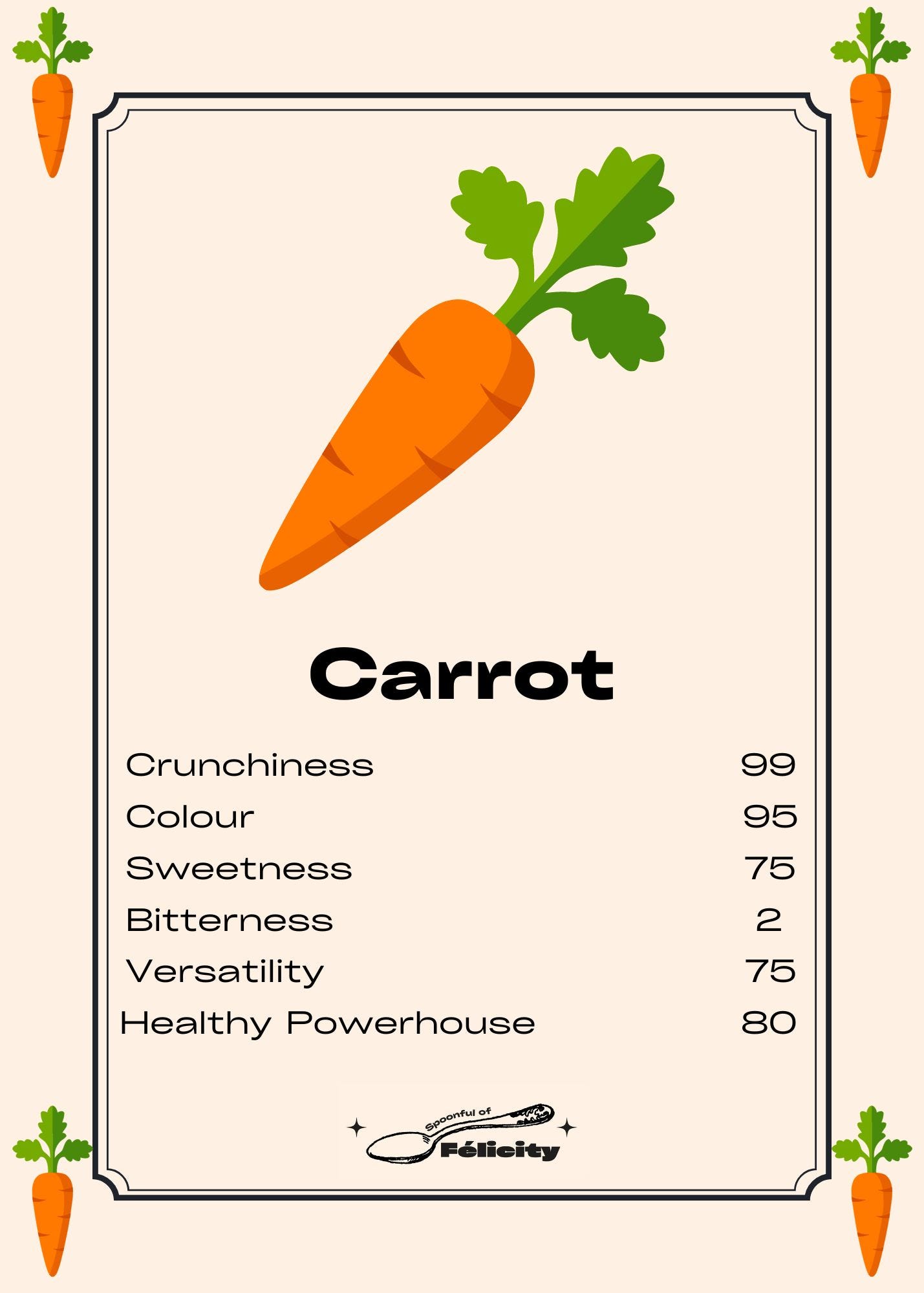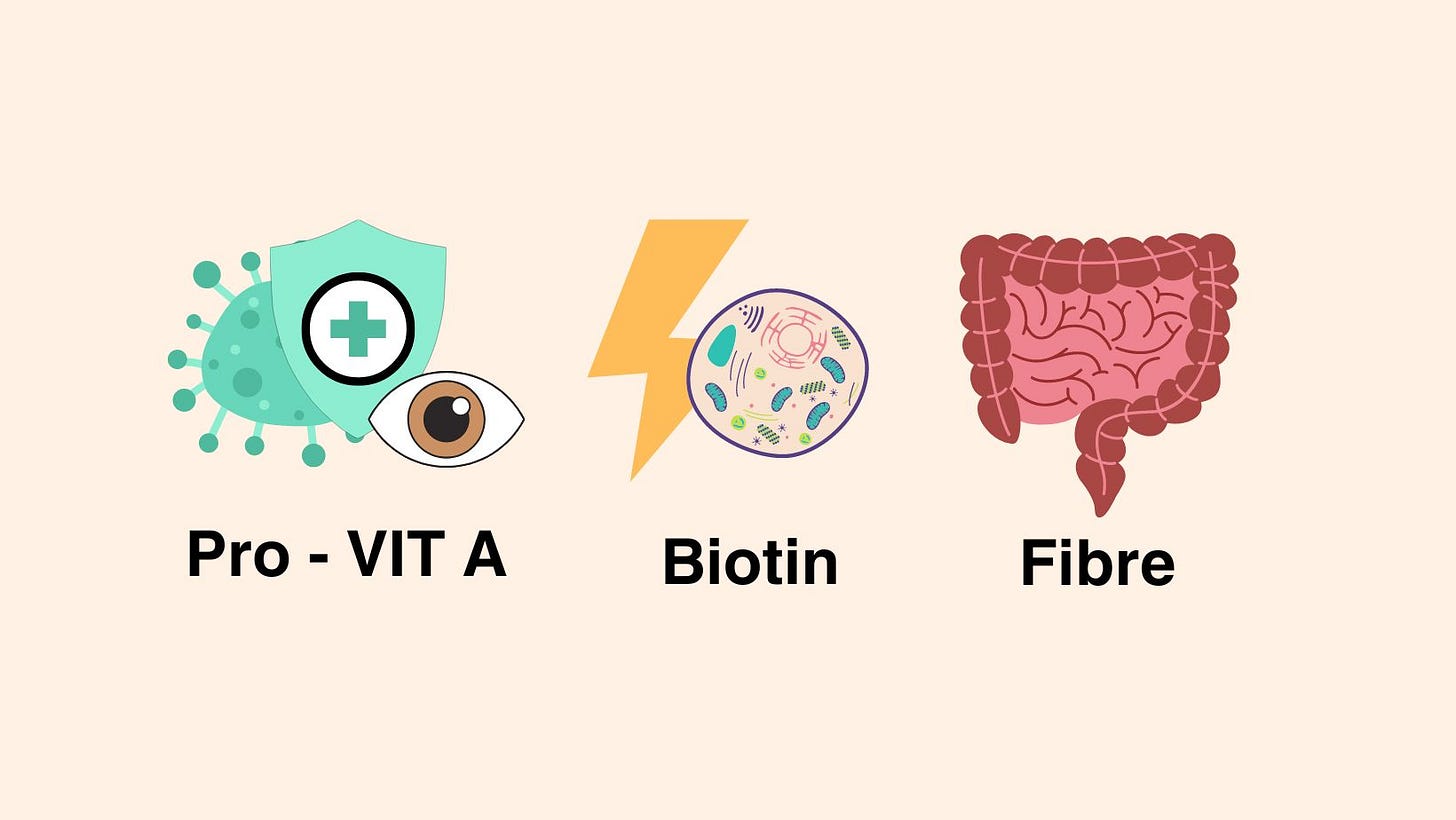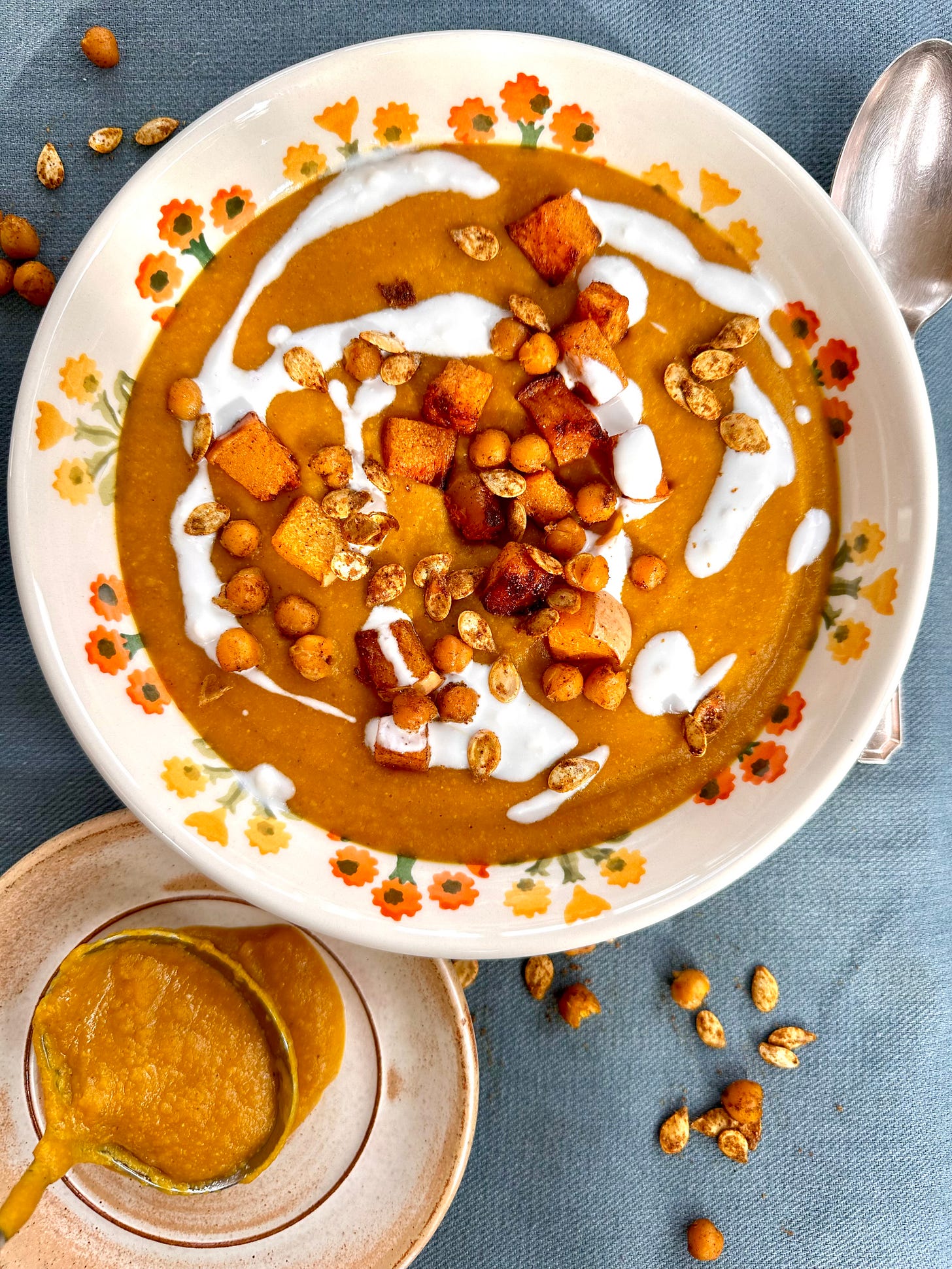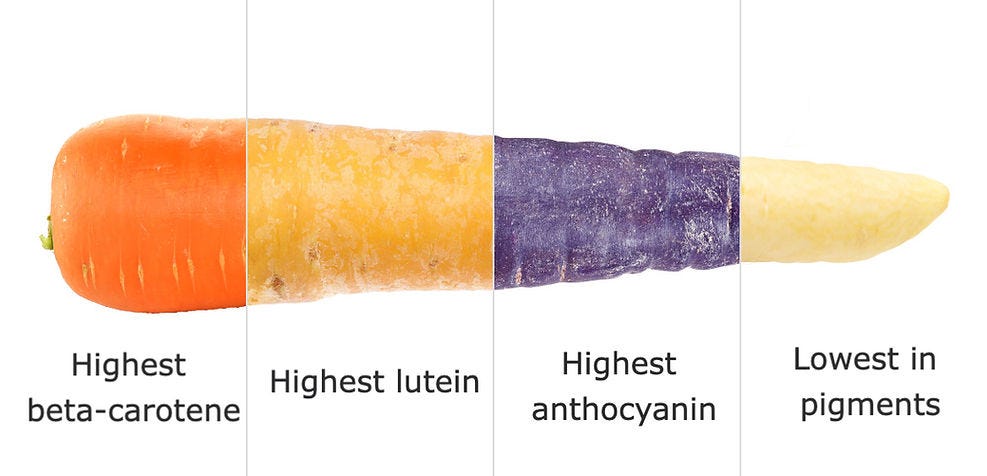HISTORY:
Wild carrots have been around for over 10,000 years and although they can still be found today, they are considered weeds and aren’t edible. Our cheap and cheerful carrots have come from cross breeding, reducing the woodiness of the root and increasing sweetness. But first, they were domesticated around Iran and Afghanistan and were popular for their seeds and leaves. Their spread across Asia and Europe was first due to their medicinal benefits but the roots then became a kitchen feature during the Middle Ages. Back then of course, they weren’t orange but black, purple, red, yellow or white. So I suppose we can say that the orange carrot we know best today originated in Holland in the 16th century, but more on that later.
FUN FACTS:
In France, we say carrots will keep your bums pink and make you more amiable. Why having a pink bum is desirable is slightly beyond me, but nevertheless there is some truth to it. Carrots contain a lot of beta-carotene, a pigment which accumulates under the skin to protect us from UV rays and can therefore, when consumed in VERY LARGE quantities, pigment our skin. But this is only slight and would be orange, not pink. When it comes to bettering our character, it might take more than a carrot. This seems to originate from the idea that to overcome a donkey’s stubbornness, you might dangle a carrot in front of him (I would argue that probably makes the donkey more irritable than amiable).
Can carrots help you see in the dark…? Not really. Sure they are a great source of pro-vitamin A which does supports eye health and reduces the risk of vision loss. But this rumour that they can somehow give us cat-like night vision is false. It was apparently popularised during WWII as propaganda to explain why the RAF was so successful at shooting down german planes at night, to avoid the latter uncovering new British radar technology. Carrots then became extremely popular! British citizens were encouraged to eat them during the ‘dig for victory’ campaign, in part to utilise surplus crops but also to promote growing your own vegetable gardens.
Can’t say this Doctor Carrot campaign has won me over though… Is it just me or is it really creepy?! It’s reminding me more of the child catcher in Chitty Chitty Bang Bang than an encouraging appeal to eat carrots instead of sweets! My vote definitely still goes to Aldi’s Kevin the Carrot! Still, during WWII sugar had to be rationed, so carrots started to appear in cakes and some shops then starting selling carrots on a stick to replace lollipops.
All this said, you can get 100% of the daily recommended amount of pro-vitamin A (carotenoids) from 1-2 carrots (depending on their size), so they’re definitely good for your eyes! Vitamin A is fat soluble so to increase absorption, enjoy carrots with a bit of fat such as olive oil, or hummus (funny how typical pairings may make sense in different ways). And interestingly enough, roasting or microwaving carrots breaks down carotenoids also making them more readily available (note this does reduce their vitamin C content though).
Carrots have always been known for medicinal purposes, but in Ancient Rome they were also popularised as an aphrodisiac. (through my newsletter research I seem to be finding a trend of this claim being used a lot in Antiquity to get people to eat vegetables… has the 5-a day campaign missed a trick?)
Vichy carrots is a popular french dish which was invented as a way to include miraculous Vichy water into dishes. The carrots are simply cooked in the local water with a bit of butter and seasoning for additional health benefits.
Carrots are still used in sweet dishes now across the world, the most famous being orange carrots used in American carrot cake, or red carrots used in Indian halwa.
How did carrots become orange? I know I’ve kept the best till last! This is such a classic, you probably already know the story. It is said that in honour of the Royal House of Orange, dutch farmers cross bred white and red carrots until they obtained an orange variety! This is slightly refuted and may instead have been an accident that the royal house then claimed in their favour. Either way, orange carrots were first depicted in the 16th Century by Dutch artists.
HOW TO COOK THEM:
Raw: Wash carrots thoroughly before eating them skin on to get the maximum amount of fibre.
Grate them on the finest grater to make Carottes Rapées a french classic served as a starter or side. Dress them in a classic vinaigrette, with just a bit of EVOO and apple cider vinegar, or go all out by adding a bit of cumin and some juicy raisins.
Cut them into batons for dipping.
Slice them julienne, or peel them into ribbons to add to salads.
Slice them in thin rounds and pickle them with coriander seeds.
Cooked: Cut them into pieces, my favourite is to quarter them lengthways then cut diagonally to get a nice lozenge shape.
Braise them by covering them halfway with water or stock, add a bit of sugar and butter/oil then cook on simmer with a lid until the liquid has practically entirely evaporated. This should create a shiny glaze for the carrot. Add more water and keep cooking if they are not quite al dente when the liquid has evaporated. My favourite variation of this is using orange juice as the liquid and adding cumin powder (no need for sugar in this case as it will come from the orange).
Roast them in the oven until golden brown, add a bit of rosemary and grated parmesan on top before cooking for an extra crispy and tasty topping.
Of course, carrots are part of a mirepoix/soffrito. It’s an integral part of the holy trinity of flavour, along with onion and celery, which adds sweetness, earthiness and umami to the base of stewed dishes.
Carrots pair particularly well with herbs like rosemary, oregano, chervil and basil; other aromatics and spices such as honey, smoked paprika, cumin, lemongrass, ginger and juniper berries; they LOVE citrus such as orange, grapefruit and lime; you can’t go wrong pairing them with other root vegetables such as beetroot, parsnips, potatoes and sweet potatoes; and other autumn/winter produce such as mushrooms, Brussel sprouts, grapes and pears; finally they also pair well with beans and pulses, cheeses and other fats such as EVOO or nuts.
Some of my favourite carrot recipes to try:
Available to An Extra Spoonful subscribers:
MOOD FOOD - FOCUS:
Beta carotene - may improve cognitive function over time and alleviate brain fog;
Lutein - anti-inflammatory which supports cognition and alertness;
Iron - beta-carotene also supports iron absorption which in turn is required to feel energised. Low iron levels have been linked with feeling weak and tired.
RECIPE:
Curried Carrot & Chickpea Soup
Ingredients (serves 5-6):
5-6 carrots (570g)
3 parsnips (600g)
3 white onions
3 Tbs hot curry powder
1 tsp turmeric powder
2 vegetable stock cubes
1 tin of reduced fat coconut milk
12g ginger
15g garlic
1 + 1/2 tins of chickpeas
salt and pepper
Crispy pumpkin seeds and toppings:
1/2 squash
Seeds scooped out of the squash
1 Tbs vegetable oil
1/2 tin of chickpeas
1 tsp curry powder
Cinnamon powder
Cumin powder
Method:
Preheat the oven at 180°C.
De-seed the squash.
Dice the squash into bitesized pieces, then lay it out onto a baking tray with 1 Tbs vegetable oil, a sprinkle of cumin, salt and a sprinkle of cinnamon. Mix until evenly coated and roast for 50 minutes or until golden brown.
Wash the seeds then rub them with a clean tea towel to remove any leftover flesh and dry them out a bit.
Rinse 1/2 tin of chickpeas and dry them out on a clean tea towel.
Mix the seeds and chickpeas with a drizzle of oil and 1 tsp curry powder then lay out flat on a baking sheet and roast for 30 minutes or until dried and crispy.
Wash the parsnips and carrots, remove the tops and roughly chop into 1-inch pieces.
Peel and quarter the onions.
In a large saucepan, heat up 1 Tbs of oil on medium. Add the onion and leave to sweat until they start to brown. Then add the carrots, parsnips, remaining 1 1/2 tins of chickpeas, all the spices, a few pinches of salt and stir until evenly coated. Sweat them off for a minute before adding the grated ginger and garlic and cooking that for another minute. Finally add the coconut milk, 1 and a half tins of water and the stock cubes.
Stir and bring to the boil then reduce to a simmer and leave covered on the heat for 30 minutes or until all the vegetables are soft.
Blend the carrot and parsnip soup until smooth.
Serve in a bowl topped with the roasted butternut squash, crispy seeds and chickpeas.
Finish with a dollop of yogurt and tuck in.
More about this autumnal soup recipe:
Shortcuts:
I can't really think of any shortcuts here as it's quite an easy recipe. You could forget about the toppings, but they do add a nice touch and don't take long to prepare.
I like making a big batch of this and storing individual portions in the freezer to have on hand for lazy lunches or dinners.
The chickpeas make this a filling soup, but if you're one of these people who can't fathom eating soup as a meal on it's own, I suggest having a smaller portion with dippy eggs.
Keys to success:
Take your time blending the soup, it may take a while but it's worth getting it extra smooth to achieve a creamy consistency.
Soup consistency can be quite personal, don't hesitate to add a little bit more water if you find it too thick. Remember it's easier to add water than to take it out.
Health benefits of carrots:
They're a good source of:
pro-vitamin A which supports the immune system, and helps to maintain healthy vision and skin;
vitamin B7 (biotin) which supports cell health and is needed to transform food into energy;
insoluble fibre - helps to make you feel full, and soften stools for better digestive health. It is also associated with phenolic compounds and therefore antioxidant properties.
Carrots contain many other beneficial active compounds, most notably antioxidant pigments such as carotenoids: lycopene (especially in red and yellow carrots), lutein and most notably a high concentration of pro-vitamin A beta carotene. Purple and black carrots also contain pigments called anthocyanins. Additionally, carrots are a source of hydrophilic phenols which have anti-inflammatory and anticancer properties.
Carotenoids all have antioxidant properties, they are excellent free radical scavengers playing a part in protecting body and cells from age-related diseases. Studies suggest that they may reduce cognitive decline, alleviate brain fog and decrease the risk of incidence of Alzheimer's disease.
Beta-carotene - converted to vitamin A to support eye health, skin health, and the immune system. It accumulates under the skin, protecting us from UV rays and potentially reducing the risk of skin cancer. Vitamin A is required for the formation of keratin to support teeth health, in part, which is also supported by the act of crunching on a carrot which helps to break down plaque and therefore strengthen our teeth barrier against harmful bacteria. Beta carotene has also been suggested to have protective affects on our liver.
Lutein - has been proven to support eye health. It may slow down the affects of age-related vision loss and cataracts. Its anti-inflammatory properties may also support cognitive function and a decreased risk of cancers and cardiovascular diseases.
Lycopene - has strong anti-cancer properties; It can inhibit oxidative damage caused by exercise. It is an excellent antioxidant, and is one of the best singlet oxygen scavenger which can cause diseases such as Alzheimer's and Parkinson’s; It has been shown to protect the brain from stroke and slow down symptoms of dementia; it participates in reducing blood pressure (of hypertensive individuals only) and the amount of blood LDL cholesterol, also known as bad cholesterol; therefore reducing the incidence of cardiovascular disease; it may protect the skin from UV damage and promote pro-collagen production which contributes to bouncy/youthful looking skin; Finally, it potentially plays a role in reducing insulin resistance and therefore the development of diabetes mellitus.
Polyacetylene - promotes cell health and reduces risk of cancer by regulating inflammation and cell death.
Anthocyanins - have excellent antioxidant activity which may protect from cancer and age-related diseases including neuronal and cardiovascular ones as well as reducing bone loss. They have also been shown to have protective affects on our GI tract, reducing inflammation and protecting the intestinal barrier (which otherwise might let bad things through), as well as promoting our gut microbiota which in turn has positive effects on our immune system, mental health and weight.








